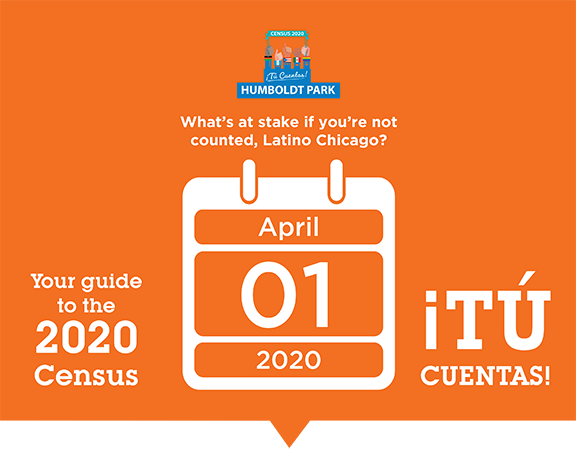
FACT: In the 2010 Census, 4.6% of children under age 5 were undercounted. (approximately 1 million young children) “Every count not only matters, it is crucial, who we count or do not count impacts the lives of our children. We are talking about the next ten years, some of the most important moments of an adolescent’s life.”
-Jessie Fuentes, Puerto Rican Agenda Co-Chair
You matter. Be counted
Information You Should Know
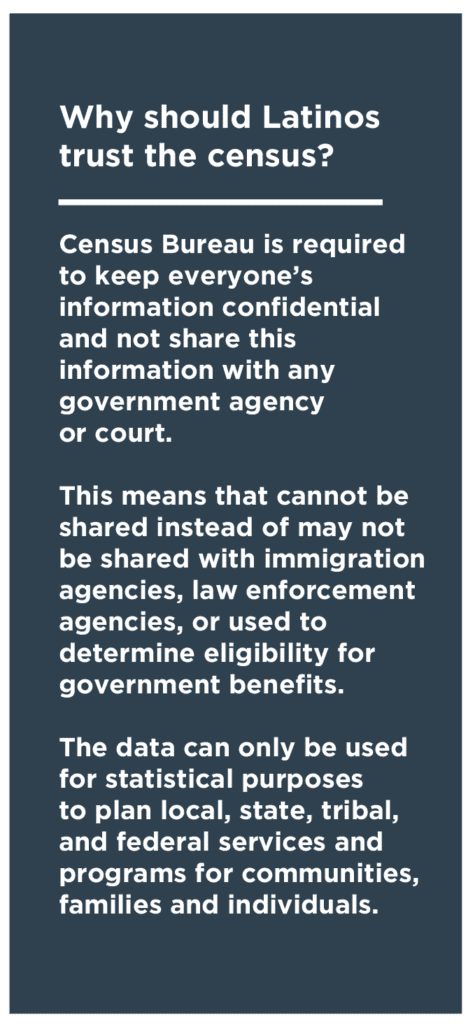
Why is there a census?
The U.S. Constitution mandates a count of every resident in the United States once each decade. This count is used as the basis of determining the number of congressional seats, redistricting, and distributing more than $675 billion in federal funds each year to support states, counties and communities’ housing, education, transportation, employment, health care, and public policy programs.
No census data is used to target individuals
Why respond to the census questionnaire?
Responding to the 2020 census is an easy, safe, and important way to help provide resources for your community for the next 10 years. Responding is easy. You can respond online or by phone in many different languages. Help is available right in your community. Responding is safe. Your information is protected by law and cannot be shared or used against you. Responding is important. A complete count helps ensure that services like Medicare, Medicaid, Social Security, and public transportation can support those who need them. How is the census data being used, and how does this affect you, your family, and your community? States, local governments, private organizations and researchers use census data to plan and target services, programs and new structures to serve the needs of residents.
Local governments and community planners use census data to decide whether and where to build new hospitals, schools, playgrounds, libraries, daycare centers, and other community resources.
Businesses and developers use census data to help determine where to open new factories, manufacturing centers, locations for new stores, the best places for new housing and the types of housing needed to best serve the residents’ needs.
Scientists, public health officials, researchers and school leaders use the data to identify demographic shifts, economic shifts and emerging patterns to project trends and the needs for new and/or different services to support each community’s residents.
States rely on federal funds, determined by the census, to help support Medicaid, Medicare, Federal Direct Student Loans, SNAP, and highway planning and construction.
Nothing to fear, a lot to gain


The census matters – to you, to your family and to your community. Census data is used to determine the need for: More early childhood programs, such as Head Start and Early Head Start. More community resources, such as health clinics, recreation centers, lunch programs, and senior centers.
Additional funding, for programs such as Medicaid, Supplemental Nutrition Assistance Programs (SNAP), Women, Infants, and Children (WIC) funding, federal funds for education programs in schools, and high-way planning and construction.
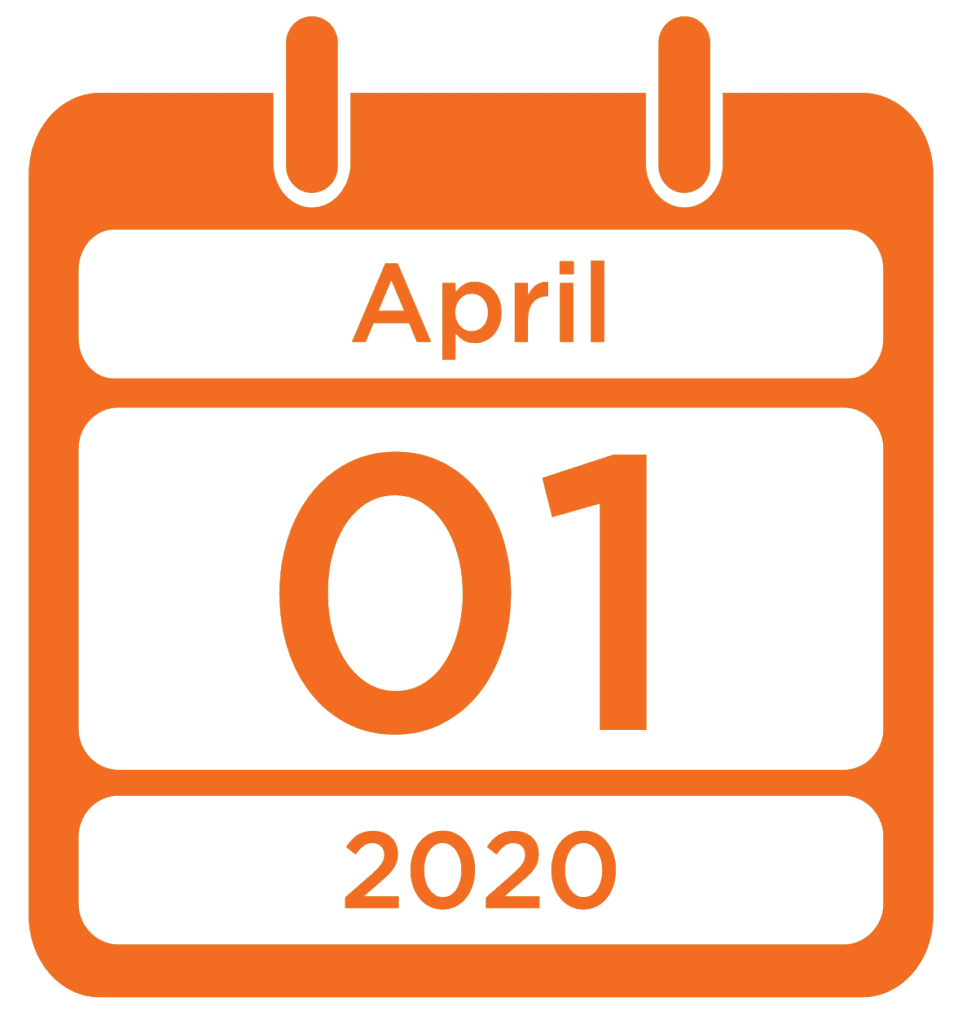
Start the count! Every household will receive a 2020 Census questionnaire. Respond online, by phone or by mail.
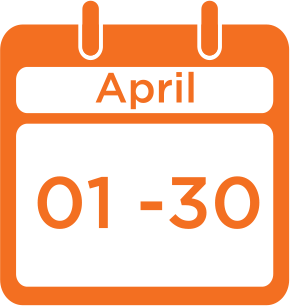
Census takers will reach out to people living in groups of college students living on campus, seniors living in senior centers, and others who live among large groups of people.
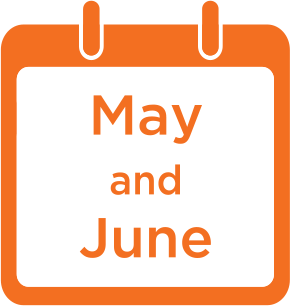
Census outreach workers begin visiting homes that haven’t responded to the 2020 Census to make sure everyone is counted.
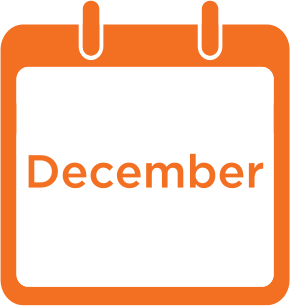
The Census Bureau delivers apportionment counts to the President and Congress as required by law.
Why are Latinos and others undercounted?
hard-to-count populations are hard to persuade, hard to locate, hard to interview and hard to contact
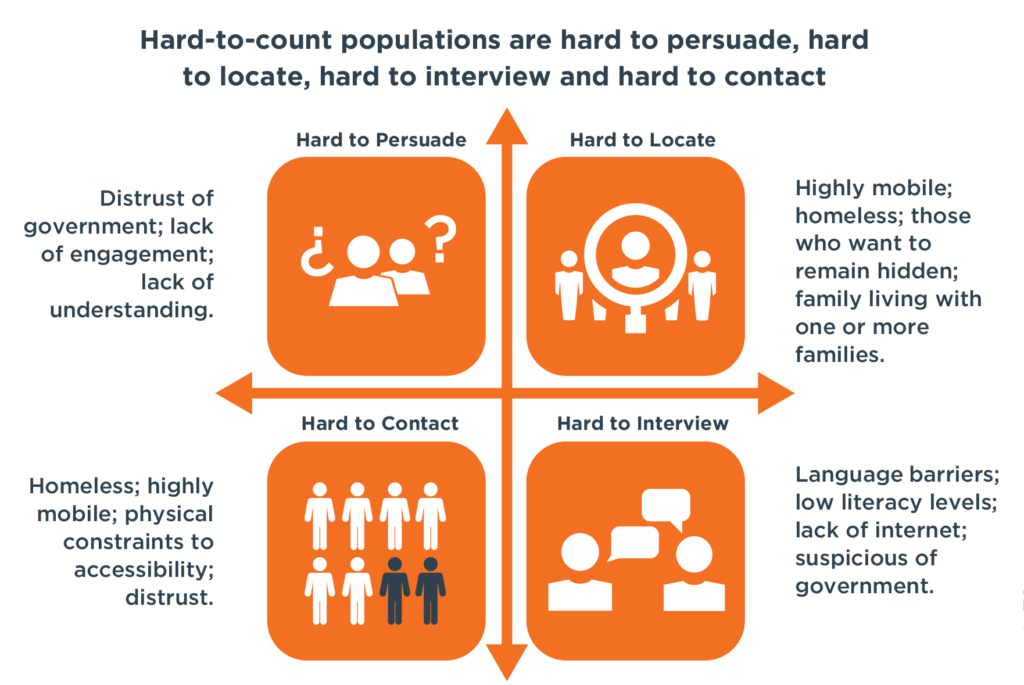
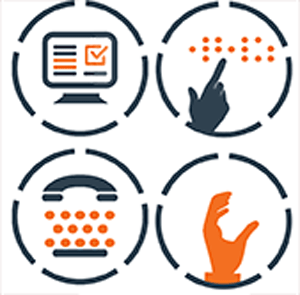
You can respond online in English, Spanish, or in 11 additional languages. We’ll also have a video in American sign language available to guide you through responding online. You can respond by phone in English, Spanish, or in 11 additional languages. You can also respond in English by TDD at 844-467-2020. We also have braille and large print guides available online to assist you with completing the paper questionnaire. We’ll have census takers available who can communicate in American Sign Language and additional languages.
Read or download the information insert below:






